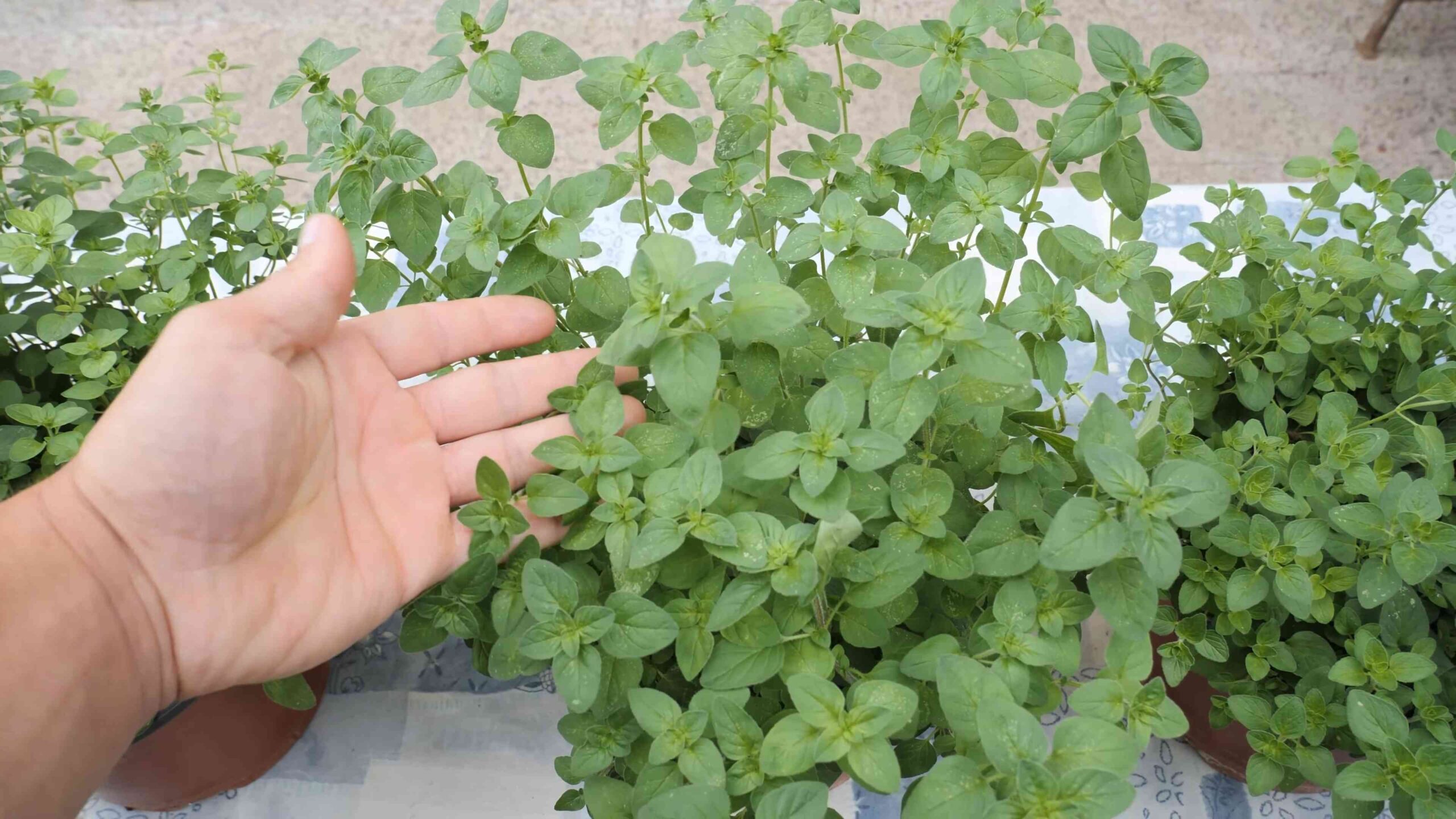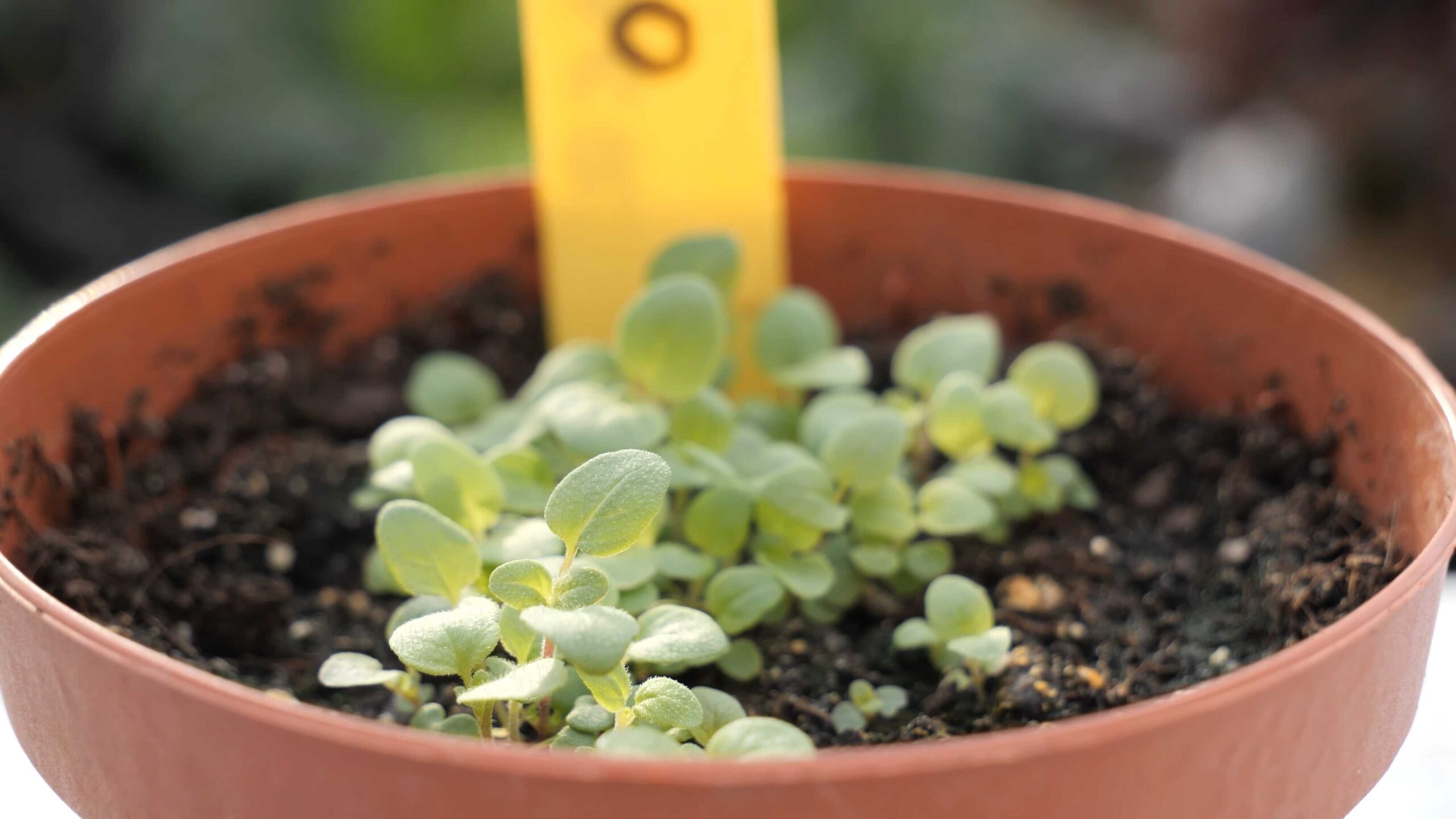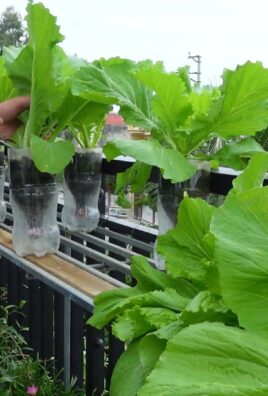Growing Oregano Kitchen Garden: Imagine stepping into your kitchen, needing a sprinkle of fresh oregano for your pasta sauce, and simply snipping it straight from a thriving plant on your windowsill. Sounds idyllic, right? Well, it’s absolutely achievable, even if you don’t have a sprawling backyard! For centuries, oregano has been cherished not only for its culinary prowess but also for its medicinal properties. From ancient Greek remedies to traditional Italian cuisine, this herb has a rich history of enhancing both health and flavor.
But why should you embark on this DIY adventure of growing oregano kitchen garden? In today’s world, where convenience often trumps freshness, having your own herb garden offers a delightful connection to nature and a guaranteed source of organic flavor. Plus, let’s be honest, store-bought dried oregano just doesn’t compare to the vibrant taste of freshly picked leaves. I’m here to guide you through some simple yet effective tricks and hacks to cultivate a flourishing oregano plant right in your kitchen. Say goodbye to bland meals and hello to a world of aromatic possibilities!

DIY Kitchen Herb Garden: Growing Oregano Indoors
Hey there, fellow herb enthusiasts! I’m so excited to share my experience with growing oregano indoors. Fresh oregano is a game-changer in the kitchen, and having it readily available is incredibly satisfying. Plus, it’s a surprisingly easy project, even if you don’t have a green thumb (like me!). Let’s dive in!
What You’ll Need
Before we get started, let’s gather all the necessary supplies. This will make the whole process smoother and more enjoyable.
* **Oregano Seeds or a Starter Plant:** You can start from seeds, which is more budget-friendly, or buy a small oregano plant from a nursery for quicker results. I’ve done both, and honestly, both work great!
* **Small Pots or Containers:** Choose pots that are at least 6 inches in diameter to give your oregano room to grow. Make sure they have drainage holes!
* **Well-Draining Potting Mix:** Regular garden soil is too dense for containers. Use a potting mix specifically designed for containers.
* **Watering Can or Spray Bottle:** For gentle watering.
* **Grow Lights (Optional but Recommended):** Especially if you don’t have a sunny windowsill.
* **Small Shovel or Trowel:** For planting.
* **Pebbles or Gravel (Optional):** To improve drainage.
* **Plant Labels (Optional):** To keep track of your herbs.
* **Scissors or Pruning Shears:** For harvesting.
Starting from Seeds: A Little Patience Required
Growing oregano from seeds is a rewarding experience, but it does require a bit more patience. Don’t worry, though; I’ll guide you through every step!
1. **Prepare the Potting Mix:** Fill your chosen pots with well-draining potting mix, leaving about an inch of space at the top. Gently pat down the soil.
2. **Sow the Seeds:** Oregano seeds are tiny, so sprinkle them sparingly over the surface of the soil. You don’t want to overcrowd them.
3. **Cover Lightly:** Cover the seeds with a very thin layer of potting mix – just enough to barely cover them.
4. **Water Gently:** Use a spray bottle to mist the soil thoroughly. You want to moisten the soil without disturbing the seeds.
5. **Create a Humid Environment:** Cover the pots with plastic wrap or a clear plastic bag to create a mini-greenhouse. This will help retain moisture and promote germination.
6. **Place in a Warm Location:** Place the pots in a warm spot with indirect sunlight. A temperature of around 70-75°F (21-24°C) is ideal.
7. **Monitor and Water:** Check the soil moisture daily. Keep the soil consistently moist, but not soggy. Remove the plastic wrap for a few hours each day to allow for air circulation and prevent mold growth.
8. **Wait for Germination:** Oregano seeds typically germinate in 10-14 days. Be patient!
9. **Remove the Plastic Wrap:** Once the seedlings emerge, remove the plastic wrap completely.
10. **Provide Adequate Light:** Place the seedlings in a sunny windowsill or under grow lights. They need at least 6 hours of light per day.
11. **Thin the Seedlings (If Necessary):** If you have too many seedlings growing close together, thin them out by snipping off the weaker ones at the soil level. This will give the remaining seedlings more room to grow.
12. **Water Regularly:** Water the seedlings when the top inch of soil feels dry to the touch.
13. **Fertilize (Optional):** After a few weeks, you can start fertilizing the seedlings with a diluted liquid fertilizer. Follow the instructions on the fertilizer package.
Transplanting a Starter Plant: The Quick Route
If you’re eager to have fresh oregano sooner, buying a starter plant is the way to go. It’s a faster and easier process.
1. **Prepare the Pot:** Fill your chosen pot with well-draining potting mix, leaving about an inch of space at the top.
2. **Remove the Plant from its Container:** Gently squeeze the sides of the nursery pot to loosen the plant. Carefully remove the plant, being careful not to damage the roots.
3. **Loosen the Root Ball:** Gently loosen the root ball with your fingers. This will encourage the roots to spread out into the new pot.
4. **Plant the Oregano:** Place the oregano plant in the center of the pot. Make sure the top of the root ball is level with the soil surface.
5. **Fill with Potting Mix:** Fill in the remaining space around the plant with potting mix. Gently pat down the soil.
6. **Water Thoroughly:** Water the plant thoroughly until water drains out of the drainage holes.
7. **Place in a Sunny Location:** Place the pot in a sunny windowsill or under grow lights. Oregano needs at least 6 hours of sunlight per day.
Caring for Your Oregano Plant: Keeping it Happy and Healthy
Once your oregano plant is established, it’s important to provide proper care to keep it thriving.
* **Watering:** Water your oregano plant when the top inch of soil feels dry to the touch. Avoid overwatering, as this can lead to root rot. Oregano prefers slightly dry conditions.
* **Light:** Oregano needs at least 6 hours of sunlight per day. If you don’t have a sunny windowsill, use grow lights.
* **Fertilizing:** Fertilize your oregano plant every 2-3 weeks with a diluted liquid fertilizer.
* **Pruning:** Prune your oregano plant regularly to encourage bushier growth. Pinch off the tips of the stems to promote branching.
* **Pest Control:** Keep an eye out for pests such as aphids and spider mites. If you notice any pests, treat them with insecticidal soap or neem oil.
* **Overwintering:** If you live in a cold climate, you can bring your oregano plant indoors for the winter. Place it in a sunny location and water it sparingly.
Harvesting Your Oregano: The Best Part!
Harvesting your oregano is the most rewarding part of the process. You can start harvesting when the plant is about 6-8 inches tall.
1. **Choose the Stems to Harvest:** Select stems that are healthy and have plenty of leaves.
2. **Cut the Stems:** Use scissors or pruning shears to cut the stems just above a leaf node (the point where leaves grow from the stem).
3. **Harvest Regularly:** Harvest your oregano regularly to encourage continued growth.
4. **Use Fresh or Dried:** You can use the oregano fresh or dry it for later use. To dry oregano, hang the stems upside down in a cool, dry place until the leaves are brittle. Then, crumble the leaves and store them in an airtight container.
Troubleshooting: Common Issues and Solutions
Even with the best care, you might encounter some issues while growing oregano. Here are some common problems and how to fix them:
* **Yellowing Leaves:** This could be a sign of overwatering or underwatering. Check the soil moisture and adjust your watering accordingly. It could also be a sign of nutrient deficiency. Try fertilizing with a balanced liquid fertilizer.
* **Leggy Growth:** This is usually caused by insufficient light. Move your oregano plant to a sunnier location or use grow lights.
* **Pests:** Aphids and spider mites are common pests that can infest oregano plants. Treat them with insecticidal soap or neem oil.
* **Root Rot:** This is caused by overwatering. Make sure your pot has drainage holes and avoid overwatering. If you suspect root rot, repot the plant in fresh potting mix.
Tips for Success: My Personal Insights
Here are a few extra tips that I’ve learned along the way:
* Don’t overwater! Oregano prefers slightly dry conditions.
* Provide plenty of sunlight. Oregano needs at least 6 hours of sunlight per day.
* Prune regularly. This will encourage bushier growth and prevent the plant from becoming leggy.
* Harvest often. The more you harvest, the more the plant will grow.
* Be patient! Growing herbs takes time and effort, but it’s well worth it in the end.
Growing oregano indoors is a fun and rewarding project that anyone can do. With a little care and attention, you’ll have a constant supply of fresh oregano to enhance your culinary creations. Happy gardening!

Conclusion
So, there you have it! Cultivating your own oregano kitchen garden isn’t just a fun project; it’s a gateway to fresher, more flavorful meals and a more sustainable lifestyle. We’ve walked through the simple steps, from choosing the right variety to harvesting your bounty, and hopefully, dispelled any myths about the difficulty of growing herbs indoors or in small spaces.
Why is this DIY trick a must-try? Because the difference between store-bought dried oregano and freshly harvested, homegrown oregano is truly remarkable. The aroma is more intense, the flavor is brighter, and you have the satisfaction of knowing exactly where your food comes from. Plus, you’re reducing your reliance on commercially produced herbs, which often travel long distances and lose their potency along the way.
But the benefits extend beyond just taste. Growing your own oregano is a fantastic way to connect with nature, even if you live in an apartment. It’s a calming and rewarding activity that can bring a touch of green into your home and a sense of accomplishment to your day. And let’s not forget the cost savings! A single packet of oregano seeds or a small starter plant can provide you with a continuous supply of fresh herbs for months, if not years, to come.
Looking for variations? Consider experimenting with different types of oregano. Greek oregano is known for its strong, pungent flavor, while Italian oregano is milder and sweeter. Mexican oregano, though not technically a true oregano, offers a unique citrusy flavor that’s perfect for Southwestern cuisine. You can also try growing oregano in different containers, from terracotta pots to repurposed jars, to add a touch of personality to your kitchen garden. Think about companion planting too! Oregano thrives alongside other herbs like rosemary and thyme, creating a fragrant and productive herb garden. You can even plant it near vegetables like tomatoes and peppers, as it’s believed to repel certain pests.
Don’t be afraid to experiment and find what works best for you. The beauty of gardening is that there’s no one right way to do things. The most important thing is to get started and enjoy the process.
We wholeheartedly encourage you to give this DIY oregano kitchen garden a try. It’s a simple, rewarding, and delicious way to enhance your cooking and connect with nature. Once you’ve experienced the joy of harvesting your own fresh oregano, you’ll never go back to store-bought again.
And finally, we’d love to hear about your experience! Share your photos, tips, and stories in the comments below. Let’s create a community of oregano enthusiasts and inspire others to embrace the joys of homegrown herbs. What variety did you choose? What dishes have you enhanced with your fresh oregano? What challenges did you face, and how did you overcome them? Your insights can help others succeed and make their own oregano kitchen garden dreams a reality. So, get planting, get cooking, and get sharing! Let’s grow together!
Frequently Asked Questions (FAQ)
1. What is the best type of oregano to grow in a kitchen garden?
The “best” type depends on your flavor preferences and culinary needs. Greek oregano (Origanum vulgare hirtum) is known for its strong, pungent flavor and is a classic choice for Mediterranean dishes. Italian oregano (Origanum x majoricum) is milder and sweeter, making it a versatile option for a wider range of cuisines. Mexican oregano (Lippia graveolens) offers a unique citrusy flavor that’s perfect for Southwestern and Mexican dishes. Consider trying a few different varieties to see which one you like best. For beginners, Greek oregano is often recommended due to its hardiness and ease of growth.
2. How much sunlight does my oregano plant need?
Oregano thrives in full sun, meaning it needs at least 6-8 hours of direct sunlight per day. If you’re growing oregano indoors, place it near a sunny window, preferably one that faces south or west. If you don’t have enough natural light, you can supplement with a grow light. Insufficient sunlight can lead to leggy growth and reduced flavor. Rotate your plant regularly to ensure all sides receive adequate light.
3. What kind of soil should I use for my oregano plant?
Oregano prefers well-draining soil that is slightly alkaline. A good potting mix for herbs is ideal. You can also create your own mix by combining equal parts potting soil, perlite, and compost. Avoid using heavy clay soil, as it can retain too much moisture and lead to root rot. Ensure your container has drainage holes to prevent waterlogging.
4. How often should I water my oregano plant?
Water your oregano plant when the top inch of soil feels dry to the touch. Avoid overwatering, as oregano is susceptible to root rot. Allow the soil to dry out slightly between waterings. During the hotter months, you may need to water more frequently. Check the soil moisture regularly and adjust your watering schedule accordingly.
5. How do I harvest oregano from my kitchen garden?
You can start harvesting oregano once the plant is about 6 inches tall. Use scissors or pruning shears to snip off stems just above a leaf node. This will encourage the plant to branch out and produce more leaves. Harvest regularly to keep the plant compact and productive. The best time to harvest oregano is in the morning, after the dew has dried but before the sun gets too hot.
6. Can I dry my homegrown oregano?
Yes, drying oregano is a great way to preserve its flavor and aroma. There are several ways to dry oregano. You can hang bunches of stems upside down in a cool, dry, and well-ventilated place. You can also spread the leaves on a baking sheet and dry them in a low oven (around 170°F) for a few hours. Alternatively, you can use a dehydrator. Once the leaves are completely dry, store them in an airtight container in a cool, dark place.
7. How do I propagate oregano from cuttings?
Propagating oregano from cuttings is a simple and effective way to create new plants. Take a 4-6 inch cutting from a healthy stem, removing the lower leaves. Dip the cut end in rooting hormone (optional) and plant it in a small pot filled with moist potting mix. Cover the pot with a plastic bag or humidity dome to create a humid environment. Keep the soil moist but not soggy. After a few weeks, the cutting should develop roots. Once the roots are established, you can transplant the new plant into a larger pot or your garden.
8. What are some common pests and diseases that affect oregano?
Oregano is generally a hardy plant, but it can be susceptible to certain pests and diseases. Aphids, spider mites, and whiteflies can sometimes infest oregano plants. These pests can be controlled with insecticidal soap or neem oil. Root rot is a common disease that can affect oregano if the soil is too wet. To prevent root rot, ensure your soil is well-draining and avoid overwatering. Powdery mildew can also occur, especially in humid conditions. Improve air circulation and treat with a fungicide if necessary.
9. Can I grow oregano indoors year-round?
Yes, you can grow oregano indoors year-round, provided you give it the right conditions. Ensure it receives enough sunlight or supplemental lighting, use well-draining soil, and water it properly. You may need to adjust your watering schedule depending on the season. With proper care, your oregano plant can thrive indoors and provide you with fresh herbs all year long.
10. How do I encourage my oregano plant to be bushier?
Regular harvesting is the key to encouraging a bushier oregano plant. Each time you snip off a stem, the plant will branch out and produce more leaves. You can also pinch back the tips of the stems to promote bushier growth. Avoid letting the plant flower, as this can reduce leaf production. By regularly harvesting and pinching back the stems, you can keep your oregano plant compact, productive, and full of flavor.





Leave a Comment